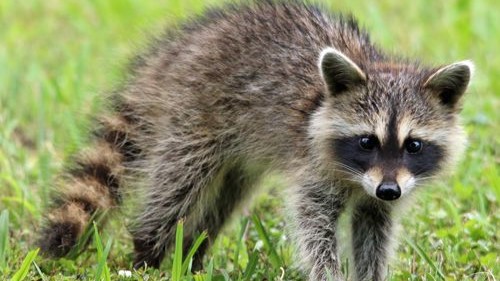Imagine being able to live both in water and on land. Humans can’t do it, but amphibians can! Amphibians are animals that live both in water and on land. The word amphibian comes from a Greek word that means “to live a double life.”
Amphibians are classified into three more specific groups. Frogs and toads are the largest group. Salamanders and newts make up another. Animals in the third group do not have legs, so they look more like large snakes. We don’t know as much about this group of amphibians because they live mostly underground.
To understand the life cycle of an amphibian, let’s take a closer look at an American toad.
Like all amphibians, toads are cold-blooded. An amphibian’s body temperature changes as the outdoor temperature changes. Some amphibians hibernate during the winter. Some toads dig deep underground. Other amphibians like frogs bury themselves in mud at the bottom of a pond. Hibernating amphibians can survive for months. They do not eat or move, using only the fat stored in their body to stay alive. Frogs and toads—and all amphibians—are also vertebrates which means they have backbones.
A toad’s life cycle begins as one of thousands of soft, slimy eggs. The mother lays her eggs close to shore in a pond, lake, or calm spot in a river or stream.
But most of these eggs will never hatch. Instead, they will be eaten by fish or other animals. If the water moves the eggs away from the shore and into direct sunlight, the eggs will dry out and die.
Out of the thousands of eggs laid, a few hundred toad eggs manage to hatch into tadpoles. A tadpole is very fragile. Its young body is made up mainly of a mouth, a tail, and gills. At this stage, tadpoles are aquatic. Like fish, they use gills to breathe underwater.
After a while, tadpoles begin swimming around and eating tiny aquatic plants. Tadpoles tend to stay together in schools, like fish. However, this makes it more likely that other animals will be able to catch and eat them. Most tadpoles end up as fish snacks.
If a tadpole survives for a month, skin will begin to grow over its gills. After about six to nine weeks, the tadpole also starts to grow little legs. As its body changes, the young frog or toad starts to look less like an aquatic animal and more like a land animal.
After a few months, a toad will make its way out of the water to land. At this stage, it may still have a tail, but that won’t last long. By this time, its gills have become lungs. That means the toad now breathes oxygen from the air instead of oxygen from the water, like fish. Soon, it will be a full-grown adult toad living and hopping around on land. Adult amphibians are carnivores, eating insects, small reptiles, and even mice.
Adult toads are very good swimmers and can even swim underwater. But they cannot use their lungs to breathe underwater. Instead, their thin, moist skin absorbs oxygen from the water.
Amphibians are a very interesting animal group. Amphibians are the only type of animal that have both gills and lungs. As adults, they live on land but lay eggs in the water. The Greek meaning of the word amphibian makes perfect sense!









